The High-Strength Low-Alloy (HSLA) HR500LA sheets are driving industries forward due to their exceptional strength, extended life span, and outstanding flexibility. Built to high-performance specifications, these new-generation steel sheets, which cater to a range of uses such as automotive and structural fabrications, are becoming increasingly preferred over other materials. But what makes HR500LA different from other types of steel? We will cover the most critical aspects of HSLA HR500LA sheets, including their most popular applications and the benefits they offer to various sectors. Are you a manufacturer looking to create something out of the box, or perhaps want to delve into the developments in steelcraft? If so, this article will present several reasons for the increased use of HR500LA sheets in the course of engineering advancement.
Introduction to HSLA Steel
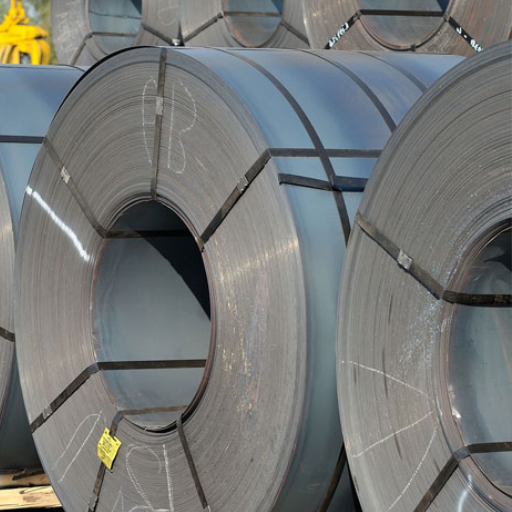
HSLA, which stands for high-strength low-alloy, is a classification of steel that enhances strength and toughness compared to traditional carbon steels. Despite the improvement in mechanical properties, its welding and forming ability still remains promising. This is accomplished by the incorporation of small doses of other elements like chromium, nickel or vanadium. HSLA steel is both lighter and stronger, making it more preferred in situations where weight savings and strength are essential, such as in vehicle construction, architecture, and earth-moving equipment industries. HSLA steel’s strength and adaptability complement each other, making the material one of the primary metals in engineering today.
What is HSLA Steel?
In contrast, steel classified as HSLA, or high-strength low-alloy steel, contains alloying elements in smaller quantities and is specifically produced to impart superior mechanical strength and corrosion resistance, while making the final product lighter and more economical compared to regular carbon steel.
Key Characteristics of HSLA HR500LA Sheets
| Key Point | Details |
|---|---|
| Material Type | High-Strength Low-Alloy (HSLA) Steel |
| Tensile Strength | 560–700 MPa |
| Yield Strength | 500–620 MPa |
| Elongation | ≥ 14% |
| Hardness | ≤ 92 HRB |
| Impact Energy | ≥ 40 J at -20°C |
| Thickness Range | 1.5–20 mm |
| Width Range | 900–2000 mm |
| Length Range | 2000–12000 mm |
| Chemical Composition | Low Carbon, Niobium, Titanium, Aluminum |
| Corrosion Resistance | Moderate, requires surface treatment |
| Surface Treatments | Galvanization, Phosphating, Powder Coating |
| Applications | Automotive, Construction, Machinery |
| Weldability | Excellent |
| Machinability | Good, supports various processes |
| Standards | EN 10149-2, ISO-TS16969, ISO 9001:2008 |
Importance of Low Alloy in Steel
The inclusion of certain elements in small quantities effectively enhances the various properties of steel and reduces its cost. There are five key points that detail why low alloy in steel is essential:
- Strength enhancement
These types of steels, which also include HSLA steels, have higher tensile strength because the elements, such as chromium, nickel, or manganese, are included in very small quantities. For example, high-strength low-alloy conventional steel grades have tensile strengths near the range of 500 MPa to 700 MPa but are not very heavy.
- Increased corrosion resistance
Small concentrations of elements like copper and silicon enhance the protective capabilities of steel against environmental factors and chemical corrosion, and are often incorporated into constructions frequently exposed to the elements, such as bridges and offshore oil platforms.
- Improved weldability
Thin, low-alloy steels are prepared in such a way as to maintain the appropriate weldability while increasing strength. The carbon and alloying element contents are maintained at controlled values to prevent distortions of the base metal during the process.
- Increased toughness
The addition of vanadium and niobium improves the toughness of low-alloy steels, inhibiting brittle fracture performance and making it possible to utilize such materials where more energy is required to break them, especially in dynamic or low-temperature applications.
- Economical
Low alloy steels strike a balance between efficiency and cost. These steels enable the material requirements of budget projects to be met while maintaining high mechanical characteristics and minimizing the use of expensive alloying components. It is particularly so in stamping quality hr500la sheets, these contain such additional elements which are costly and ground out the underlying steel.
Mechanical Properties of HSLA HR500LA Sheets
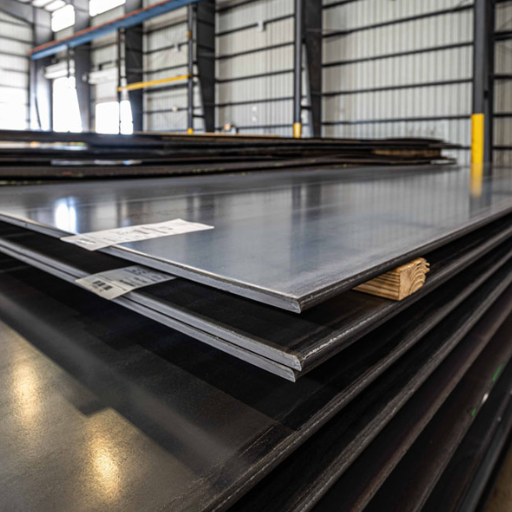
HSLA HR500LA sheet materials possess aimed superior physical attributes to ensure proper functionality, which otherwise could not be achieved without the material’s formation ability. Some of these mechanical properties are listed below.
- High Yield Strength: In all cases, the minimum yield strength of the sheets is 500 MPa, which enables the maintenance purpose of the material.
- Tensile Strength: Material in this state can possess a very high tensile strength without developing plastic deformations.
- Elongation: Even on the more robust side, these specific sheets provide sufficient tensile elongation for ease of formability.
- Impact Toughness: Assessments of the performance of HSLA HRA500LA sheets under dynamic loading demonstrate that they are highly reliable, even at sub-zero temperatures.
All these factors make the material perfect for critical structural and industrial requirements.
Yield Strength and its Significance
The mechanical property yield strength describes the level of stress at which plastic deformation of the material begins, which is a critical property. In HSLA HR500LA sheets, the yield strength serves as a valuable property because it reflects the material’s resistance to distortion when subjected to high pressure. HSLA HR500LA is characterized by a range of strength levels (up to 500 MPa [Megapascals)], although certain factors such as treatment and alloying might affect the yield strength of the plate.
Such strong material is employed in a variety of components that require suppression of large deformations. This includes, but is not limited to, Dimensionally stable walls for construction, car bodies, and other applications. Additionally, the high yield strength reduces the likelihood of components developing bends and enhances their performance, particularly in harsh conditions and environments.
Higher yield strengths also have implications for fatigue resistance and the ability of components to wear out due to repeated loading. This is especially beneficial in industries such as transport, where the material is continuously exposed to dynamic conditions with shapes and purposes meant to last. The high yield strength offered by HR500LA sheets is one that meets the strictest industry compliance, as well as high-quality standards.
Comparative Mechanical Properties of HSLA vs. Other Steel Types
| Property | HSLA Steel | Carbon Steel (A36) | Stainless Steel (AISI 304) |
|---|---|---|---|
| Yield Strength (MPa) | 250–860 | 250 | 230–330 |
| Tensile Strength (MPa) | 450–700 | 400–550 | 580–1180 |
| Elongation (%) | 14–22 | 20 | 8–43 |
| Hardness (Brinell) | 150–360 | 120–160 | 170–360 |
| Density (g/cm³) | 7.8 | 7.8 | 7.9 |
| Corrosion Resistance | Moderate, needs treatment | Low | High |
| Weldability | Excellent | Good | Excellent |
| Ductility | High | Moderate | High |
| Cost | Moderate | Low | High |
Effect of Alloy Composition on Performance
While examining the HSLA HR500LA sheets, it is essential to note that the high-strength, low-alloy sheet metal structures depend on the composition of the alloys used for fabrication. Certain features like strength, wearability, or even resistance to corrosion would be developed by a well-defined amount of specific additions. The following are some of the common alloying elements and their functionalities in influencing performance.
- Carbon (C):
This is the basic element of iron, and care must be taken because pure carbon will tend to harden steel very much. If too much carbon is present, steel will be less elastic and have less impact resistance; this is why there is a requirement to distribute carbon levels in HSLA.
- Manganese (Mn):
Manganese increases the total amount of hardenable steel and raises the resistance to abrasion. It is also a function of how much oxides will remain in the steel – the more oxides there are, the worse the structure.
- Nickel (Ni):
Nickel is added to give strength, low-range toughness, and resistance to seawater and atmospheric corrosion present in some structures.
- Chromium (Cr):
The enhancement of wear and corrosion properties is primarily contributed to by the presence of chromium in steel. It also helps the steel resist oxidation at elevated temperatures.
- Molybdenum (Mo):
Molybdenum significantly enhances strength and toughness, particularly as the temperature increases. Furthermore, it also protects crevice and general corrosion, particularly in areas with high chloride ion concentrations.
Accurate adjustment of the alloy mix with HSLA steels enables them to bear even greater loads than expected in fields such as engineering, communication, or transportation systems.
Chemical Composition of HSLA HR500LA Sheets
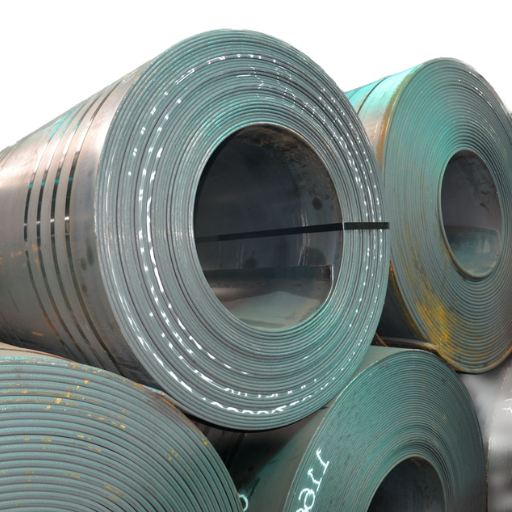
Experts have made the HSLA HR500LA sheets with a perfect level of chemicals used for its production to obtain the strength, toughness, and wear resistance of the said sheet. Typically, such elements are present:
- Carbon (C): Up to about 0.20% to provide strength but not at the expense of weldability.
- Manganese (Mn): about 1.50% to increase strength and hardness.
- Silicon (Si): Below 0.50% resulting in better strength and resistance to oxidation.
- Phosphorus (P) and Sulfur (S) for less than 0.03%, to avoid loss of ductility that leads to brittleness.
- Microalloying additions (e.g. Niobium, Titanium, Vanadium): Low dose, most likely below 0.10%, to allow for the grain refinement and increase toughness.
The composition of such grades remains consistent across a wide range of applications to ensure uniform mechanical performance.
Detailed Analysis of Steel Chemical Composition
Steelmaking requires the management of additives and targeting ranges for such elements to produce the desired mechanical and physical properties to be found in steel. These elements are discussed in further detail below and by the most recent developments:
- Carbon (C): Carbon is usually regarded as the most crucial element in steel, with contents in the range 0.02% – 2. 1%. Low-carbon steel contains less than 0.3% which has good weldability and ductility, whereas medium-carbon (0.3% – 0.6%) and high-carbon (0.6% and over) will increase the hardness and strength of the steel. An example of this is carbon tool steel, which can achieve a carbon content of 1.5%, providing excellent wear resistance.
- Silicon (Si): It is generally used in the range of 0.1% to 0.5% silicon as a deoxidizing agent during steelmaking. However, in specialized steels, the presence of even 2-3% silicon addresses the transformation of their internal structure to enhance strength or develop electromagnetic characteristics for certain transformer steels.
- Manganese (Mn): Manganese is present in the order of about 0.3% and in some steels, being over 2%, which enhances the strength and wear resistance of the steel. However, higher manganese proportions such as Hadfield steel (12-14% Mn) are applied where impact shag fretted application like railroad tracks and machineries used in excavation works.
- Phosphorus (P) : Does not usually exceed 0.03% to guarantee that ductility is retained. In free-cutting steels, however, it is permissible to increase the phosphorus limit to 0.1%, which is done to enhance the machinability of the steel.
- Sulfur (S) : The practical amount is less than or almost below 0.03% as phosphorus to avoid brittleness in most of the steels. However, some free-cutting steels have a sulfur content that can reach up to 0.35%, due to their special machinability properties.
- Chromium (Cr): The amount of chromium in steel varies depending on the product range, ranging from 0.3% in some structural steels to 10.5%–30% in stainless steels, due to its enhancement of workability, including corrosion resistance, work hardening, and strength.
- Nickel (Ni): Tends to be found in quantities between 0.5% to 5% and offers benefits such as improved strength and ductility, especially at lower temperatures. The 304 and 316 series contain nickel ranging from 8% to 12%, which enhances corrosion resistance.
- Molybdenum (Mo): A small amount comprises stages typically varying from 0.2% to 1%. Molybdenum improves strength and creep resistance, particularly in corrosive environments.
- Vanadium (V): The present percentages in most steels range from 0.05 to 0.2 percent vanadium, which is used today to promote grain refinement, enhance strength, and toughen specially low-alloy steels.
- Titanium (Ti): Present in most steels in small amounts (0. O 1 – 0.1%), carbon and nitrogen, which stabilizes and induces welding carbon. Titanium construction alloys are also used in other areas where high-strength components are needed.
According to the ongoing research on stress testing of materials, for this investigation, cold rolled HSLA HR500LA sheets.
Recent Trends and Data
As one of the latest articles mentions, it is observed that new high-strength, lightweight alloys are most frequently used in automotive steel production for improved fuel consumption. The incorporation of so-called Advanced High-Strength Steels(AHSS), has also witnessed highly increased use with yield strengths often above 700 MPa for targeted application in particular cases using specific finer microalloying of niobium, vanadium, and titanium etc. Moreover, a shift to ultra-low carbon steels (≤0.02% C) is evident, increasing the ability of such materials to undergo deformation and achieve complex shapes.
Data from industrial studies also show that there has been a 6% annual increase in the consumption of stainless steel, owing to its greater usage in the building, medical devices, and energy sectors. A requirement for the addition of chromium and nickel elements should be observed globally, as they must be incorporated during the material’s formation for corrosion or stress purposes.
The developed techniques for preparing these specific compositions, coupled with other modifications, are due to the reasons why steel remains one of the most important materials used in modern machinery.
The use of HSLA steels, such as HR500LA sheets, has been well-received in automotive components, including structural members, cross-members, inner panels, and others, thanks to their excellent formability.
Role of Elements in HSLA Steel Performance
| Element | Role in HSLA Steel |
|---|---|
| Carbon (C) | Improves strength, reduces ductility |
| Manganese (Mn) | Enhances strength, hardenability |
| Chromium (Cr) | Increases corrosion resistance, strength |
| Nickel (Ni) | Boosts toughness, impact resistance |
| Molybdenum (Mo) | Improves wear resistance, hardenability |
| Vanadium (V) | Refines grain, increases strength |
| Titanium (Ti) | Enhances strength, refines grain |
| Copper (Cu) | Improves corrosion resistance |
| Silicon (Si) | Enhances strength, deoxidizes steel |
| Phosphorus (P) | Improves strength, reduces toughness |
| Sulfur (S) | Improves machinability |
| Niobium (Nb) | Refines grain, increases strength |
Analysis of Alloying Elements in HR500LA
HR500LA high-strength low-alloy (HLSA) steel products are noted for their improved mechanical properties and weldability. The effectiveness of HSLA steel HR500LA is attributed to the appropriate levels of alloying elements present in this type of steel. These elements, being strength, toughness, wear, and corrosion resistance, are among the most important. The second section describes the main aspects of the alloys and their applications, including alloying of steel.
- Carbon (C)
Purpose: A well known way of increasing strength and hardness of steels is due to the presence of carbon in the form of carbides and within the solid solution. However, it is restricted to maintain substantial ductility and weldability. Carbon content in HR500LA: 0.05-0.12%.
- Manganese (Mn)
Purpose: Toughness, strength, and wear resistance are added by the Manganese element, which is also a deoxidizer. It also assists in the reduction of brittleness induced by sulfur element. Carbon content in HR500LA: 1.5-2.0%.
- iobium (Nb)
Purpose: Increase in grain structure modification caused by niobium is beneficial for both the increase in yield strength and improvement in impact toughness. It also participates in precipitation strengthening that improves the mechanical properties of the material. Content of HR500LA: 0.02 – 0.05%.
- Titanium (Ti)
Purpose: Change in microstructure through titanium is beneficial as it prevents coarsening of increased grains of manufacture when nitrogen is present by increasing neutralization of nitrogen. As a consequence, formability and toughness are enhanced. Content of titanium in HR500LA: 0.015–0.035%.
- Phosphorus (P)
Purpose: Corrosion resistance is improved, and the addition of phosphorus increases atmospheric durability. The amount should be controlled since too much will cause brittleness. Amount: ≤ 0.02% with HR500LA.
Sometimes, other elements can be found, such as small amounts of silicon (Si), sulfur (S), and aluminum (Al), which can also contribute to the modification of HSLA HR500LA sheets’ properties for certain manufacturing applications.
Manufacturing Process of HSLA HR500LA Sheets
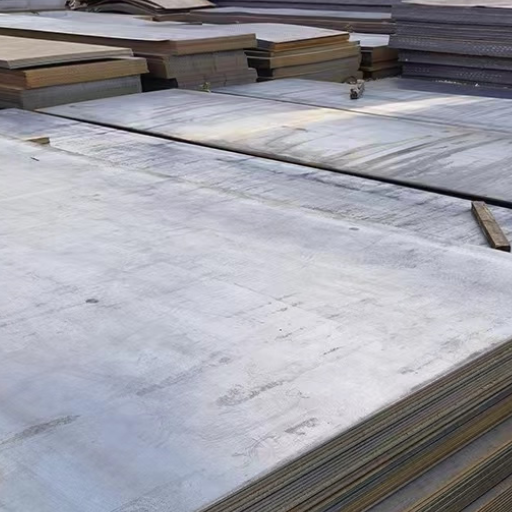
Manufacturing of HSLA HR500LA sheets requires the following major processes for the desired strength and toughness to be achieved:
- Smelting and Alloying
Smelting of ore and alloys is performed in a controlled chamber where iron ore and alloys or elements such as manganese, phosphorus are melted. This is followed by alloying, which involves adding certain elements to the steel to achieve the desired mechanical properties.
- Molding
This involves pouring molten steel contents into mold billets or slabs to serve as the raw material for subsequent processes.
- Hot deforming
The reheat slabs of steel go through heated mills. Such a step enhances the performance of steel by improving its impact toughness, while also breaking down its grains to smaller sizes.
- Cooling in a Controlled Manner
Cooling of the hot-rolled sheets is done slowly in a controlled manner, thereby helping to provide a good balance between strength and ductility.
- Managing the Condition
The sheets may be surface converted or surface enhanced, or coatings may be applied on them to resist corrosion for installation of such sheets in industries.
These processes guarantee that no compromise is made when it comes to the quality and effectiveness of Hsla HR500La sheets.
Hot Rolled vs. Cold Rolled Processes
| Aspect | Hot Rolled Steel | Cold Rolled Steel |
|---|---|---|
| Processing Temperature | Above recrystallization temperature (~1700°F) | Below recrystallization temperature |
| Surface Finish | Rough, scaly | Smooth, shiny |
| Dimensional Precision | Less precise | Highly precise |
| Strength | Lower strength | Up to 20% stronger |
| Internal Stress | Minimal | Higher, requires stress relief |
| Cost | Cheaper | More expensive |
| Applications | Structural components, railroad tracks | Aerospace, appliances, precision parts |
| Workability | Easier to shape | Harder, requires more pressure |
| Aesthetic Appeal | Less visually appealing | More visually appealing |
| Shrinkage | Shrinks during cooling | No shrinkage after forming |
Quality Control in Steel Manufacturing
I personally believe that steel manufacturing necessitates quality control, as the deliverables at any stage of fabrication must comply with a set of specifications and/or performance standards. It will be necessary to conduct extensive testing, including various chemical, mechanical, and visual inspections, to identify and rectify any defects in the product. It is a major factor, with consistent audits and advanced technical capabilities, to produce safe and high-quality steel services. Proper processes embody quality control. One word of caution: it is an integrated excellence program.
One of the main goals was to determine whether the simulated outputs possess the same applicability as analytical methods, specifically in the case of spot-welded HSLA HR500LA sheets.
Surface Treatment Techniques for HSLA Sheets
High-strength low-alloy (HSLA) materials are highly susceptible to corrosion, so surface treatment is an absolute necessity to improve efficiency and lifespan. Surface treatment is crucial for protecting the base metal and enhancing the performance of materials in various industrial applications. In the following section, we discuss five basic surface treatment processes for HLSA sheets:
- Pickling
In pickling the surface of oxides, scale and rust go off when acid solutions are used. This helps clean the surface of the steel, preparing it for further processing. Dilute hydrochloric acid and sulfuric acid are commonly used acids in such cases. Additionally, the use of pickling agents enhances the steel’s ability to support coatings or finishes applied to it.
- Galvanization
As the term implies, galvanization involves applying a zinc coating layer to the exposed surface of high-strength, low-alloy sheets to protect them from rusting. This is often achieved through various techniques, such as hot-dip galvanizing or electro-galvanic deposition, depending on the intended purpose. They protect against extreme corrosion when necessary and are thus very useful in very aggressive environments.
- Phosphating
Phosphating is the process of applying a phosphate layer onto the surface of steel using chemical conversion, otherwise known as chemical dipping. This prevents the steel from corroding and improves the adhesion of the paint or lacquer. It is also considered a mandatory step before painting or powdering HSLA HR500LA sheets.
- Electroplating
This process of electrolysis coats the working surface of HSLA sheets with a thin layer of metal. Nickel, chromium, or zinc, for example, can be deposited onto the surface to protect it from wear and corrosion or to enhance its visual appeal.
- Shot Blasting
Shot Blasting is a method used to remove surface contaminants, such as rust, mill scale, and deposits, without the use of chemicals. The process involves propelling abrasive materials at extremely high speeds, which abrade the surface of any scale, thereby providing a smooth and clean surface for subsequent priming or coating. The shot blasting technique also strengthens the sheet and enhances its aesthetic value.
The choice of surface treatment technology depends on the intended end-use of the HSLA sheet; therefore, the surface treatment methods can be considered as adaptive to the strict industrial requirements.
Applications of HSLA HR500LA Sheets
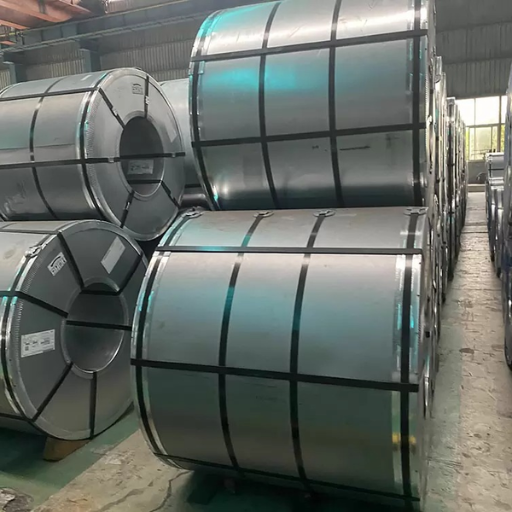
Nowadays, several sectors extensively utilize HSLA HR500LA sheets due to their high tensile strength and low mass. Many uses are especially popular in the automobile industry for making parts such as body parts, building equipment, tanks, boiler tanks, and others. Due to their exceptional strength and flexibility, these materials are well-suited for the fabrication of safety structures and structural elements. Finally, they are primarily used in manufacturing machines and means of transportation, where it is crucial to conserve qualities such as strength and endurance.
Automotive Applications of HSLA Steel
High-strength low-alloy (hereafter referred to as HSLA) steel is defined as yet another engineering material that features prominently in the field of automotive manufacturing, as it contributes to overcoming the need for lighter, more efficient, and economically viable weight-saving solutions. Automotive advancements necessitate improvements in materials that help reduce fuel consumption and comply with prevailing safety and environmental legislation. In that regard, HSLA steel is unmistakably important.
HSLA steel is mainly applied to the fabrication of essential parts like the chassis, structural reinforcement, weight-loss suspension systems, and body-in-white BIW applications. As an illustration, the use of HSLA steel in structural reinforcement saves approximately 25% of the overall vehicle weight compared to the use of conventional steel, which is a crucial factor, especially for fuel economy strategies and GHG reduction targets.
There has been a growing trend in demand for this type of steel, according to predictions from the automotive industry, mainly due to the increasing number of electric vehicles. The higher strength-to-weight ratio helps increase the driving range of electric cars while absorbing impact energy, making them crashworthy. Moreover, the improvement in the available grades of HSLA steel allows for greater design freedom, meaning manufacturers can deal aesthetically and aerodynamically without compromising performance.
That’s how HSLA steel, which possesses enormous formability in addition to high strength characteristics and good welding properties, remains a vital tool in the automotive industry and in the development of future vehicles that are greener and faster.
Other Industries Utilizing HSLA HR500LA Sheets
| Industry | Applications |
|---|---|
| Automotive | Chassis, suspension, reinforcement beams |
| Construction | Structural beams, bridges, industrial buildings |
| Machinery Manufacturing | Heavy machinery, agricultural equipment |
| Aerospace | Structural components, lightweight parts |
| Energy | Wind turbine components, pipelines |
| Shipbuilding | Hulls, structural reinforcements |
| Railway | Tracks, railcar components |
Case Studies of HSLA Steel in Use
1. Automotive Light-Weighting
For weight-intensification purposes, HSLA steel, such as HR500LA sheets, has been widely accepted in the automotive industry, as it doesn’t compromise on safety. In one of the carmakers’ case studies, it was demonstrated that replacing the white parts from mild steel to HSLA steel resulted in a 15% decrease in weight, while maintaining the crash performance of the structure. This was crucial in making the cars more fuel-efficient as well as more environmentally friendly.
2. Heavy Equipment Frames
One of the major players in agriculture, implementing firms, adopted the use of HSLA steel in the production of tractor frames. With the use of HR500LA, the company aimed for 25% stronger frames during high-stress activities. Besides, the lightweight of the frames eased transportation and assembly, and operational costs decreased by 10%.
3. Infrastructure – Use in the Construction of Bridges
HSLA steel has been a primary material used in the construction of bridges in the modern era. An example is the case of a construction project carried out in Europe, where HR500LA steel was used to replace old materials, resulting in a 35% reduction in bridge weight while improving bearing capacity. This improved the performance of the structure and the cost of maintenance was also lowered up for an extended period.
4. Energy – Wind Power Components
HSLA steel also has functional applications in renewable energy components. For instance, some HR500LA sheets were used in the construction of the wind turbine frames. This allowed for the construction of taller structures without requiring more substantial footings. This translated to a 20% increase in the output of the turbines.
5. Railway Vessels
HSLA steel is applied in the construction of train vehicles, especially freight wagons. The use of HR500LA steel to manufacture the rail car body enabled manufacturers to reduce the weight of the rail cars by 18%, thereby allowing for the transportation of heavier goods, which enhanced efficiency. This, in turn, increased sales and revenues, as the cost of freight per ton was significantly reduced after considering emissions per tonne-kilometre.
References
- Springer – Distortion simulation of gas metal arc welding (GMAW) processes for automotive body assembly
This article discusses the use of high-strength low-alloy (HSLA) steel, including HR500LA, in automotive applications. It provides insights into material properties and their applications in welding processes.
Link to article - Springer – Automated Method for Pre-Straining of Steels for Bake Hardenability Testing
This paper examines the properties of various steel types, including hot-rolled HSLA steel, and their applications in the automotive industry.
Link to article
Frequently Asked Questions (FAQ)
What are HSLA Steel Grades and Their Mechanical Properties?
HSLA steel grades, or high-strength low-alloy steels, are designed to offer improved mechanical properties, such as yield strength and tensile strength, compared to conventional carbon steels. These steels are formulated with specific chemical compositions to enhance their strength and durability while maintaining good ductility and weldability, making them suitable for various applications, including automotive and structural components.
What Is the Minimum Yield Strength of HSLA Steel?
The minimum yield strength of HSLA steel varies depending on the specific grade and application. Generally, HSLA steels have a yield strength that ranges from 250 MPa to over 700 MPa. For instance, HR500LA sheets may have a minimum yield strength of around 500 MPa, making them suitable for high-stress applications such as chassis components and reinforcement beams.
How Does the Chemical Composition of HSLA Steel Affect Its Properties?
The chemical composition of HSLA steel plays a crucial role in determining its mechanical properties and performance. By including elements like manganese, vanadium, and niobium, manufacturers can enhance strength levels and improve characteristics such as impact strength and corrosion resistance. This tailored composition enables HSLA steels to meet the specific requirements of various automotive industry applications.
What Are the Advantages of Using Cold-Rolled HSLA Steel?
Cold-rolled HSLA steel offers several advantages, including improved surface finish, tighter tolerances, and enhanced mechanical properties. The cold rolling process increases the steel’s yield strength and tensile strength, making it ideal for applications that require high strength and good fatigue resistance, such as automotive chassis and structural components.
Can HSLA Steel Be Welded Effectively?
Yes, HSLA steel can be welded effectively, but specific practices must be followed to ensure optimal weldability. Preheating and post-weld heat treatment may be necessary to prevent issues such as cracking, especially in high-strength, low-alloy grades. Following proper welding procedures will ensure the integrity and performance of welded joints in structural applications.
What Surface Treatments Are Recommended for HSLA Steel?
Surface treatments, such as galvanization, coating, and painting, are commonly recommended for HSLA steel to enhance corrosion resistance and durability. Galvanizing provides a protective layer that helps prevent rust, making HSLA sheets suitable for outdoor and harsh environments, particularly in automotive applications where exposure to moisture is prevalent.
How Do HSLA Steels Compare to Other Steel Types in Terms of Formability?
HSLA steels generally offer good formability, making them suitable for various shaping processes, including bending and stamping. Their balanced chemical composition and mechanical properties enable them to maintain structural integrity while being formed into complex shapes, which is crucial for automotive components such as suspension arms and strut mounts.
What Applications Are Best Suited for HSLA Sheets?
HSLA sheets are best suited for applications requiring high-strength and lightweight solutions, particularly in the automotive industry. They are commonly used in manufacturing chassis, reinforcement beams, and structural components that demand excellent mechanical properties while minimizing weight. The versatility of HSLA steels makes them ideal for a wide range of automotive applications and other structural uses.







